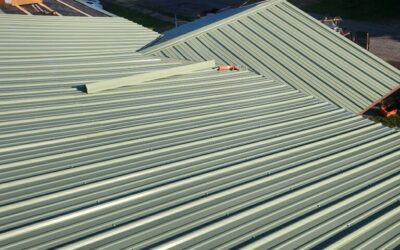Built-Up Roofing (BUR) has been a cornerstone in the roofing industry for over a century, offering durability, weather resistance, and cost-effectiveness. This guide delves into the intricacies of BUR systems, highlighting their construction, benefits, applications, and considerations to help you determine if it’s the right choice for your building
What is Built-Up Roofing?
Built-Up Roofing, commonly referred to as BUR, is a multi-layered roofing system designed primarily for low-slope or flat roofs. It consists of alternating layers of bitumen (asphalt or coal tar) and reinforcing fabrics (felts or ply sheets), topped with a protective surface layer. This layered approach provides a continuous sealed surface, offering superior waterproofing and UV protection .
Components of a BUR System
- Base Sheet: Installed over insulation or a cover board, this sheet provides the foundational waterproofing layer.
- Ply Sheets: Reinforcing fabrics that add strength and flexibility to the system.
- Bitumen Layers: Hot asphalt or cold-applied adhesives used to bond the layers together.(
- Surfacing Layer: Typically gravel or a mineral-surfaced cap sheet that protects against UV rays and mechanical damage .
Types of BUR Systems
- Hot Asphalt BUR: Traditional method using heated asphalt to bond layers.
- Cold BUR: Utilizes cold-applied adhesives, reducing fumes and odors during installation.
- Ballasted BUR: Incorporates a heavy layer of gravel or stone to hold the roofing materials in place .
Advantages of Built-Up Roofing
- Durability: Multiple layers provide redundancy, ensuring continued protection even if the top layer is damaged .
- Waterproofing: The continuous sealed surface offers excellent resistance to water intrusion.(
- Fire Resistance: Gravel or mineral surfaces enhance fire resistance.
- UV Protection: Surface layers protect against ultraviolet radiation, prolonging the roof’s lifespan.
- Energy Efficiency: Reflective coatings and insulation layers can reduce cooling costs .
- Low Maintenance: Generally requires minimal upkeep, with occasional inspections and minor repairs .(
Applications of BUR
BUR systems are ideal for
- Commercial Buildings: Office complexes, shopping centers, and warehouses.
- Industrial Facilities: Factories and manufacturing plants.
- Institutional Structures: Schools, hospitals, and government buildings .
Their robustness makes them suitable for structures requiring long-term roofing solutions
Considerations and Drawbacks
- Installation Complexity: BUR systems require skilled labor and can be time-consuming to install .
- Weight: The multiple layers add significant weight, potentially necessitating structural reinforcement .
- Odors and Fumes: Hot asphalt applications can produce strong odors and fumes during installation.
- Leak Detection: Identifying leaks can be challenging due to the multiple layers.
- Maintenance: While generally low, BUR systems still require periodic inspections to ensure integrity.
Cost Implications
The cost of a BUR system varies based on materials, labor, and regional factors. On average, installation costs range from $5.50 to $8.50 per square foot . While the initial investment may be higher than some alternatives, the longevity and durability of BUR systems can offer cost savings over time.
Is BUR Right for Your Building?
Consider a BUR system if:
- Your building has a flat or low-slope roof.
- You require a durable, long-lasting roofing solution.
- Fire resistance and waterproofing are top priorities.
- You’re prepared for the initial investment and potential structural considerations.
Consulting with a professional roofing contractor can provide insights tailored to your specific building needs.
Conclusion
Built-Up Roofing systems offer a time-tested, reliable solution for flat and low-slope roofs, particularly in commercial and industrial settings. With their multiple layers providing durability, waterproofing, and fire resistance, BUR systems continue to be a preferred choice for many building owners. While there are considerations regarding installation and weight, the long-term benefits often outweigh these challenges.
For a visual overview of Built-Up Roofing systems, consider watching the following video:
Understanding Built-Up Roofing Systems
 (440) 307-2060
(440) 307-2060


